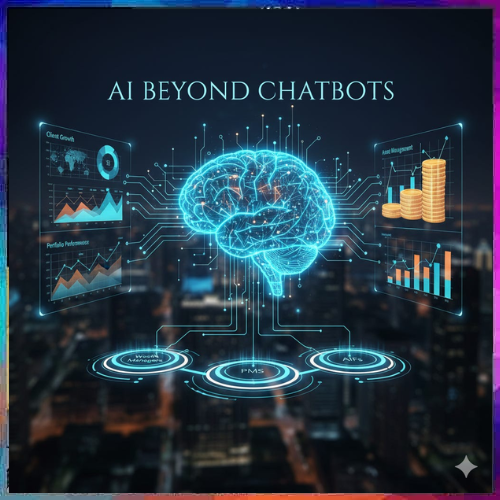
Amazon Web Services has announced five new artificial intelligence (AI) services designed to put machine learning in the hands of more application developers and end users – with no machine learning experience required. AWS introduced new services that use AI to allow more developers to apply machine learning to create better end user experiences, including new machine learning-powered enterprise search, code reviews and profiling, fraud detection, medical transcription, and human review of AI predictions.
AWS has been announcing five new AI services that build upon Amazon’s rich experience with machine learning, and allow organizations of all sizes across all industries to adopt machine learning in their enterprises – with no machine learning experience required.
Amazon Kendra reinvents enterprise search with machine learning
Amazon Kendra reinvents enterprise search by allowing employees to search across multiple silos of data using real questions (not just keywords) and deploys AI technology behind the scenes to deliver the precise answers they seek (instead of a random list of links). Employees can run their searches using natural language (keywords still work, but most users prefer natural language searches). As an example, an employee can ask a specific question like 'when does the IT help desk open?', and Amazon Kendra will give them a specific answer like ‘the IT help desk opens at 9:30 AM’, along with links back to the IT ticketing portal and other relevant sites. Customers can use Amazon Kendra across their applications, portals, and wikis. With a few clicks in the AWS Management Console, customers point Amazon Kendra at their various document repositories and the service aggregates petabytes of data to build a centralized index. Kendra helps to ensure that the search results adhere to existing document access policies by scanning permissions on documents so that search results only contain documents for which the user has permission to access. Additionally, Amazon Kendra actively retrains its machine learning model on a customer specific basis to improve accuracy using click-through data, user location, and feedback to deliver better answers over time.
Amazon CodeGuru improves software development by using machine learning
Amazon CodeGuru is a new machine learning service that automates code reviews and finds an application’s most expensive lines of code. There are two components of Amazon CodeGuru – code reviews and application profiling. For code reviews, developers commit their code as usual (support for GitHub and CodeCommit exist today, with more repositories coming over time) and add Amazon CodeGuru as one of the code reviewers, with no other changes to the normal process or software to install. Amazon CodeGuru receives a pull request and automatically starts evaluating the code using pre-trained models that have been trained on several decades of code reviews at Amazon and the top ten thousand open-source projects on GitHub. Amazon CodeGuru will review the code changes for quality, and it if discovers an issue, it will add a human-readable comment to the pull request that identifies the line of code, specific issue, and recommended remediation, including example code and links to relevant documentation.
Amazon Fraud Detector delivers automated fraud detection using machine learning
Amazon Fraud Detector provides a fully managed service for detecting potential online identity and payment fraud in real time, based on the same technology used by Amazon’s consumer business – with no machine learning experience required. Amazon Fraud Detector uses historical data of both fraudulent and legitimate transactions to build, train, and deploy machine learning models that provide real-time, low-latency fraud risk predictions. To get started, customers upload transaction data to Amazon Simple Storage Service (S3) to customize the model’s training. Customers only need to provide the email address and IP address associated with a transaction, and can optionally add other data (e.g. billing address, or phone number). Based upon the type of fraud customers want to predict (new account or online payment fraud), Amazon Fraud Detector will pre-process the data, select an algorithm, and train a model – using the decades of experience running fraud detection risk analysis at scale at Amazon.
Amazon Transcribe Medical uses machine learning to transcribe medical speech
Amazon Transcribe Medical solves these problems by using machine learning technology to automatically transcribe natural medical speech. Clinical documentation applications built on top of Amazon Transcribe Medical’s speech-to-text capabilities produce accurate and affordable transcripts. Amazon Transcribe Medical consists of multiple machine learning models that have been trained on tens of thousands of hours of medical speech to deliver accurate, machine learning-powered medical transcription. Transcripts are generated in real time, eliminating the multi-day turnarounds. Amazon Transcribe Medical can help physicians automatically transcribe conversations during the patient encounter without the distraction of manual note taking, allowing health care providers to focus on patient care. Physicians can speak naturally, and Amazon Transcribe Medical uses built-in automatic punctuation to overcome the limitations of existing transcription software.
Amazon Augmented Artificial Intelligence (A2I) allows developers to validate machine learning predictions with human reviewers
Amazon Augmented Artificial Intelligence (A2I) is a new service that makes it easier to build and manage human reviews for machine learning applications. Amazon A2I provides pre-built human review workflows for common machine learning tasks (e.g. object detection in images, transcription of speech, and content moderation) that allow machine learning predictions from Amazon Rekognition and Amazon Textract to be human-reviewed more easily. Developers choose a confidence threshold for their specific application and all predictions with a confidence score below the threshold are automatically sent to human reviewers for validation. Developers can choose to have their reviews performed by Amazon Mechanical Turk’s 500,000 global workers, third-party organizations with pre-authorized workers (including Startek, iVision, CapeStart Inc., Cogito, and iMerit), or their own private reviewers. The results are stored in Amazon S3, and developers receive a notification when review is complete so they can take action based on the trusted results from human reviewers.
Swami Sivasubramanian, Vice President, Amazon Machine Learning, AWS, says, “Companies across various industry segments tell us that they want to leverage Amazon’s extensive experience with machine learning to address some of the common challenges they face as enterprises on an on-going basis. These challenges include internal search, helping software developers write better code, identifying fraudulent transactions, and improving the overall quality of all machine learning systems. With decades of experience in building machine learning systems, Amazon has created internal systems that successfully address such challenges, and today’s launches are the next iteration of the same customer obsession that spurred the development of these systems."
See What’s Next in Tech With the Fast Forward Newsletter
Tweets From @varindiamag
Nothing to see here - yet
When they Tweet, their Tweets will show up here.





























